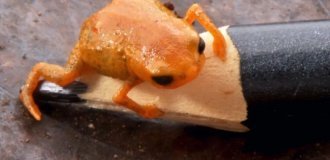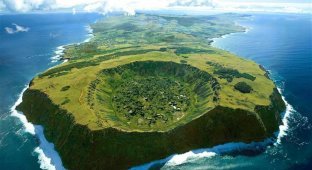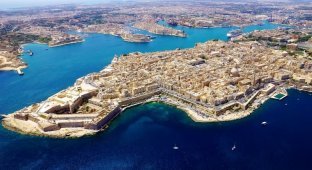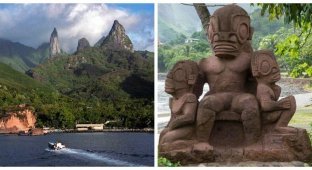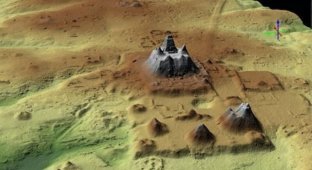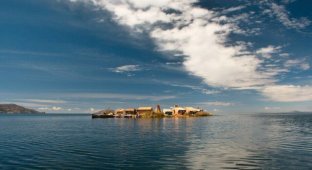Where did the settlers of Roanoke go? The mystery of the missing colony (5 photos)
The development of new territories and the establishment of settlements there is not an easy task. Especially if the settlers are separated from their native lands by an entire ocean, and the local residents, if there are any, are not very hospitable. Nevertheless, people in search of a better life stubbornly strive forward, even if terra incognita awaits them. 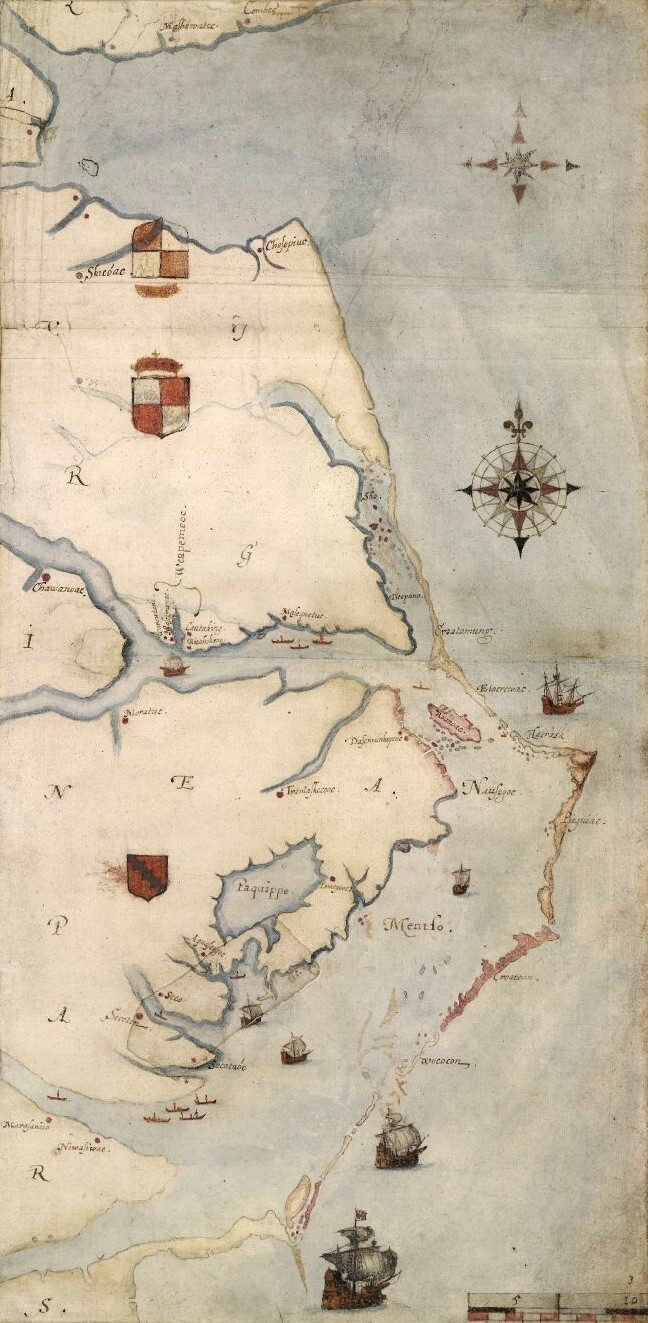
English map of the Chesapeake Bay, 1585. Roanoke Island marked in pink
Many of these settlements in the New World disappeared into obscurity, dissolving into time. Slightly more fortunate ones eventually became large cities, and some of them are fraught with mysteries, some of which arose during the founding.
The development of the New World began with small settlements-colonies, often private, with virtually no support from the Old World. While the coast of the northern part of South America and the islands in the Caribbean Sea were actively occupied, this was not the case in the north. The rich and warm waters of the Caribbean archipelago, fertile lands, mines with precious metals and stones - all this was developed, and cities quickly grew on the coasts. But the much colder and inhospitable northern coast began to be settled much later.
The Roanoke Colony was founded with private money under Elizabeth I. England was gaining a foothold in the New World, about which there were legends telling of various mystical treasures hidden in the depths of the continent. For example, about the “golden fruit” or the “fountain of youth”. However, the first attempt to found a colony failed. The settlers made contact with several local tribes, but according to their subsequent reports, during one of the friendly visits, one of the natives stole a silver cup. For this, the colonists burned one of the Indian villages and thereby spoiled relations with most of the tribes nearby. This, as well as errors in planning, led to serious food problems. Yes, the fort they built provided good protection from attacks, but normal hunting or gathering outside of it was out of the question. As a result, the colony, founded on July 29, 1585, was abandoned by its inhabitants about a year later, in the summer of 1586. 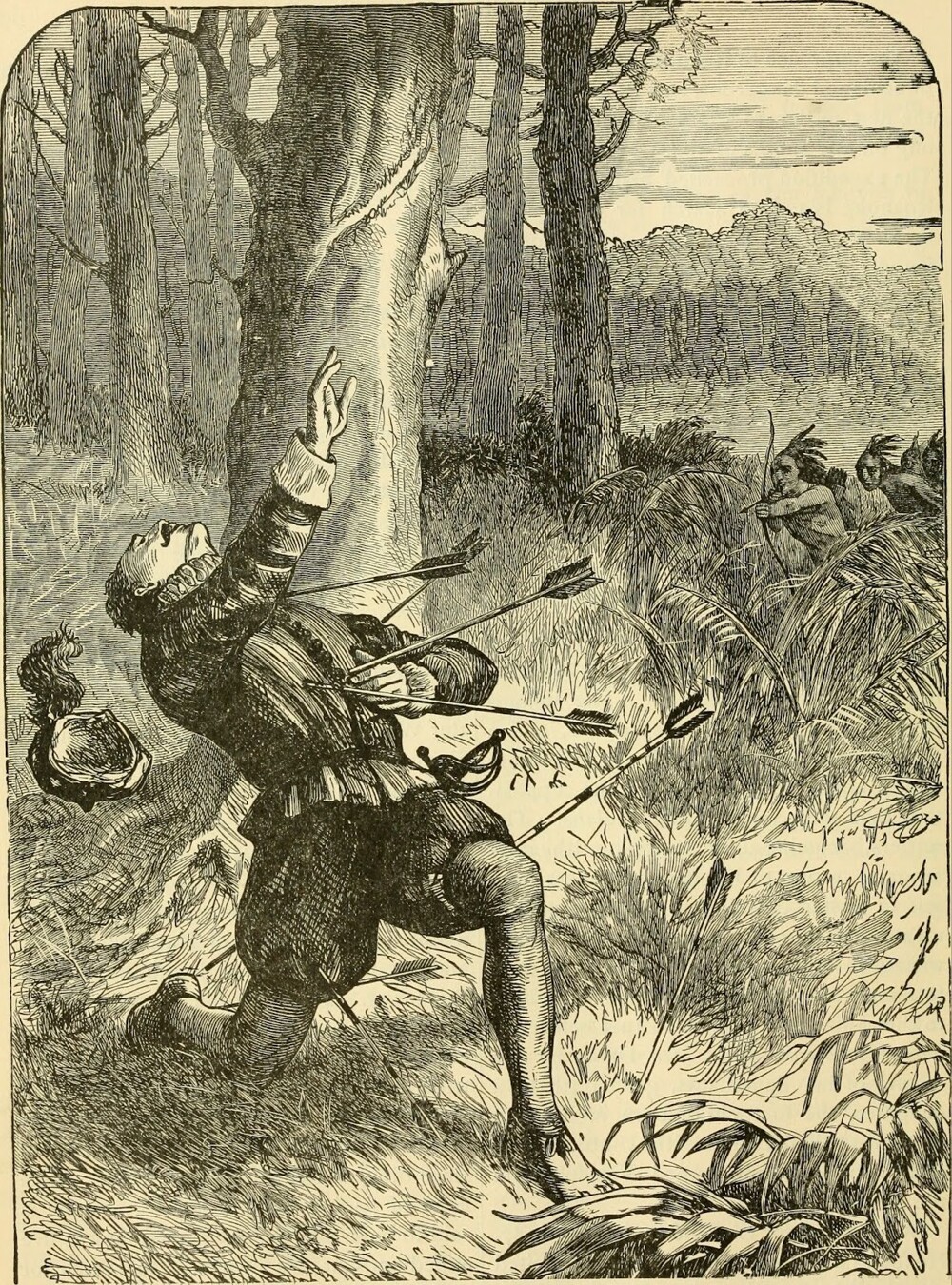
Death of Roanoke colonist George Howe at the hands of Indians, illustration for a 1901 book
In 1587, a second attempt was made to found the Roanoke Colony. This time the group consisted of 155 people. Good relations were restored with one of the local tribes, but other tribes, still remembering the actions of the colonists, remained hostile, which led to the murder of a couple of colonists who strayed too far from the settlement. Some of the colonists (a little less than a third) convinced the leadership of the settlement to go back to England asking for help. There were 115 people left in the colony - men, women and children. However, help did not come as quickly as required. At this time, England was attacked by the Spanish Invincible Armada, and all ships and ships were used to repel the attack. So they were able to get to Roanoke from England only three years later, on August 18, 1590. At the site of the colony, they found only an abandoned settlement without a single person.
About 90 men, 17 women and 11 children are missing. There were no signs of struggle or combat and no remains in the settlement. It didn't look like anyone had attacked the colonists, it was as if they had gotten up and left at some point. The word "CRO" was found carved into one of the trees nearby, and the word "CROATOAN" was found carved into the palisade around the settlement. The buildings and fortifications were partially dismantled, which also did not confirm the version of an attack or a quick escape. It was agreed with the colonists that if for some reason they had to leave, a Maltese cross should be depicted on a tree nearby, but no symbol even remotely similar to it was ever found. Several days were spent searching for the missing residents, but worsening weather, as well as dark rumors that began to circulate among the British, forced them to curtail the search and head back. The fate of the missing people remained unknown. 
Engraving from the book depicting the British surveying the empty Roanoke Colony on January 1, 1876
The story of the lost colony is extremely popular among local residents of the modern Atlantic coast of the North Atlantic. This includes elements of local folklore, unverified rumors and speculation, as well as outright mysticism or even ufology. We can say that the "Lost Roanoke Colony" has become a kind of urbanlegend, giving rise to various hypotheses to this day.
The first and, perhaps, the most logical hypothesis seems to be that, surrounded by hostile tribes and in conditions of a lack of supplies, the colonists were attacked by the Indians and killed. According to some reports, some of the Indians worshiped a certain god - Croatoan. It was his name that was carved on the trees around the abandoned colony. Some researchers believe that the settlers may have been partially killed, and partially captured and sacrificed to this god. However, the supporters of this theory did not provide any logical evidence: do not forget that no traces of the battle or bodies were found. And if the corpses could have been removed, then the traces of the battle and damage to the buildings would definitely not have been hidden.
The second version is considered to be the death of the colonists at sea. Before the group of ships that brought them left for England, the settlers were left with a small two-masted pinnace for navigation along the coast and daily needs. When examining the colony, the ship was not found, and, as a result, a hypothesis arose that on it the settlers tried to either return to England or get to other colonies to the south, but since the ship was not intended for this, the colonists died at sea. This theory fully explains the disappearance of people, but the absence of a cross indicating that they had to leave the colony casts doubt on it.
There are also options about an attack by the Spaniards and the destruction of the colony or an epidemic of an unknown disease. However, the Spaniards did not go that far north, although they knew about Roanoke and even had plans for it. The epidemic theory does not stand up to criticism, since no bodies were found, and no information about diseases among the surrounding tribes was recorded either. 
Indian attacks were quite common, especially considering the colonists' often rather disdainful attitude towards the locals. Engraving from 1858
Many generations of local residents came up with various hypotheses. From the completely logical: about the departure of most of the settlers, who did not die from hunger and deprivation, to one of the friendly Indian tribes. To completely wild and unscientific ones, like time shifts or alien abductions. At the moment there is no clear answer about what happened. There are many theories of varying degrees of reliability, but it seems that the findings of 2020 have become the final point.
Then American archaeologists suggested that the settlers moved to the neighboring island of Hatteras. After careful excavations, many 16th-century artifacts were discovered there, including women's jewelry, which indirectly indicates people from the Roanoke colony. In addition, some of the local tribes have interesting features in their speech and traditions, which may also be a consequence of the fact that some of the colonists lived among them. However, lovers of paranormal phenomena and conspiracy theories are not satisfied with these completely logical explanations. And to this day they continue to consider the history of Roanoke unsolved, which is the source of their crazy theories.









